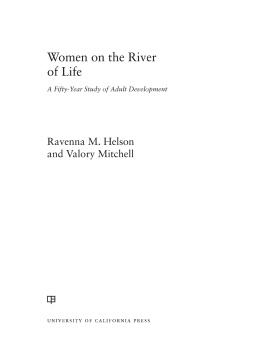First published 1991 by Westview Press, Inc.
Published 2018 by Routledge
52 Vanderbilt Avenue, New York, NY 10017
2 Park Square, Milton Park, Abingdon, Oxon OX14 4RN
Routledge is an imprint of the Taylor & Francis Group, an informa business
Copyright 1991 Taylor & Francis
All rights reserved. No part of this book may be reprinted or reproduced or utilised in any form or by any electronic, mechanical, or other means, now known or hereafter invented, including photocopying and recording, or in any information storage or retrieval system, without permission in writing from the publishers.
Notice: Product or corporate names may be trademarks or registered trademarks, and are used only for identification and explanation without intent to infringe.
Library of Congress Cataloging-in-Publication Data
Shannon, Lyle W.
Changing patterns of delinquency and crime: a longitudinal study
in Racine / by Lyle W. Shannon.
p. cm.
Includes bibliographical references.
ISBN 0-8133-8288-2
1. CrimeWisconsinRacineLongitudinal studies. 2. Juvenile
delinquencyWisconsinRacineLongitudinal studies. I. Title.
HV6795.R33S5 1991
364.3'6'0977596dc20 90-25337
CIP
ISBN 13: 978-0-367-01638-8 (hbk)
So many people in Wisconsin and Iowa have worked so long on our various research projects on juvenile delinquency and crime that it is difficult to select those whose efforts applied to a specific research report, book chapter, journal article, or monograph. Involvement in the research on delinquency and crime commenced for some as early as 1972 and for others as recently as 1988. The names of those who played various roles in direction, analysis, data collection, coding, data manipulation, and report writing for four of the projects, "The Relationship of Juvenile Delinquency and Adult Crime to the Changing Ecological Structure of the City," National Institute of Justice Grant 79-JN-AX-0081, "A Processual Analysis of the Development of Continuities in Delinquency and Crime in High Delinquency and Crime Neighborhoods," National Institute of Juvenile Justice and Delinquency Prevention Grant 82-JN-AX-00G4, "A More Precise Evaluation of the Effects of Sanctions," National Institute of Justice Grant 84-IJ-CX-0013, and "Prediction and Typology Development," National Institute of Justice Grant 85-U-CX-0019, are included in this brief acknowledgment.
Judith L. McKim has been involved in the earlier Racine research on the economic absorption and cultural integration of inmigrant workers since 1970 and then in the birth cohort research since 1972. She worked on the research design, instruments for data collection, data collection in Racine, and data processing, analysis, and report writing from the beginning. Supervision and training of the staff in both Iowa City and Racine has been her full time responsibility since 1970. She has assisted the principal researcher in writing and rewriting, cutting again and again, what some have considered to be all too lengthy reports to government agencies. This has always been difficult because almost every page seemed to be important in accounting for how we have arrived at the conclusions, some of which are so provocative.
Kathleen R. Anderson joined us in 1977 and has become more and more involved in the analysis and report writing. Her chapters from several research reports made a major contribution to understanding the complexity of the connection between juvenile delinquency and adult crime and the problem of errors in prediction.
Emily J. Meeks (deceased), James Curry, William F. Skinner, Lawrence Haffner, and William E. Murph, although no longer at the Iowa Urban Community Research Center, carried out the computer analyses over many years of research, including those described in this monograph. Haffner's mapping and graphics expertise has added notably to our presentations. Murph's work on computer-generated typologies and delinquent and criminal careers plus his willingness to assist us in difficult computer analyses long after employment with Preventive Medicine at the University of Iowa Hospitals has been especially appreciated.
Rachel E. Pezanoski has been Field Director in Racine during every interviewing phase of our research and for much of the time that data were being collected in the Police Department and courts. Among others who were field supervisors at one stage or another of the research were Michael R. Olson, Barney K. Pauze, Victoria F. Davison, Delores Luedtke, and Susan Shemanske. The following were either graduate or undergraduate students involved in various coding and analytic activities: Barbara A. Carson, Hugh S. Espey, Cheryl L. Garland, Tina Yuk-Bing Abels, Shari Hessong Morgan, Shirley Nelson-Kilger, Tie-Hua Ng, Vijayan K. Pillai, Joanne Ament, Jane Perkins, Ruth Moderson, and Margaret L. Bruns. These students, mostly graduate at the time, came from numerous sociology, geography, history, and business administration departments. The list would be even longer were we to include those who obtained interviewing and coding experience during earlier stages of the research, students from the University of Iowa and from the University of Wisconsin-Parkside.
Of the many who assisted in secretarial, clerical, and tabular work are Julie Burton, Debi S. Schreiner, Regina Oni, Mary Kathleen Stockman Zimmerman, and Debra J. Cobb. The manuscript was produced in camera-ready form by Tammie Woellert of the University of Iowa's Weeg Computing Center.
Our research has spanned the period in which Leroy Jenkins was Chief of Police and has continued through the administrations of numerous others, among them James J. Carvino, George Christensen, and Karl A. Hansen, the current police chief. Sergeant Alan D. Baker, Records Division, has been particularly helpful to us in recent years.
Members of the Advisory Boards for the projects described were: Professors Roland J. Chilton (University of Massachusetts), Harwin L. Voss (University of Kentucky), Aubrey Wendling (San Diego State University), Marvin Wolfgang (University of Pennsylvania), Robert M. Figlio (University of Pennsylvania), Terence P. Thornberry (State University of New York-Albany), and Don C. Gibbons (Portland State University). Their suggestions and guidance were always appreciated. It is unfortunate that we have never had adequate funds to follow up on all of the suggestions made by our distinguished colleagues. Professor Robert Nash Parker (University of Iowa) has advised us on some of the more complex analyses. Professors Toby Parcel and David A. Parton supported our analyses in times of need.
Iowa's Vice President for Research, Dr. Duane C. Spriestersbach, and Deans Dewey B. Stuit and Howard Laster of the College of Liberal Arts assisted in financial support of the projects, as did the National Institute of Justice and the National Institute of Juvenile Justice and Delinquency Prevention. Their financial support does in no way indicate their agreement or disagreement with the conclusions which are presented in this volume.
Lyle W. Shannon






